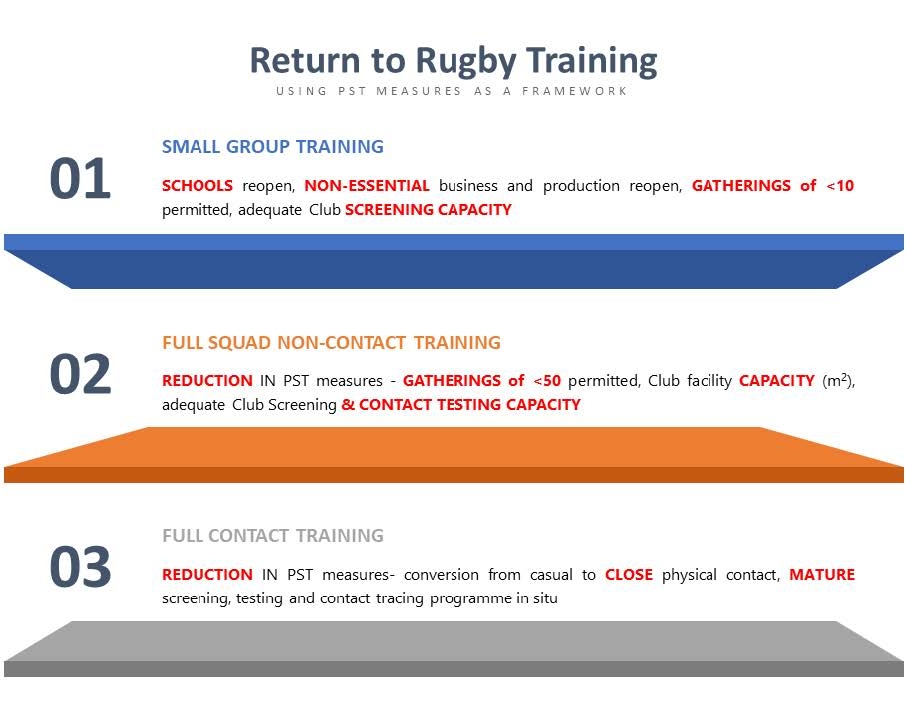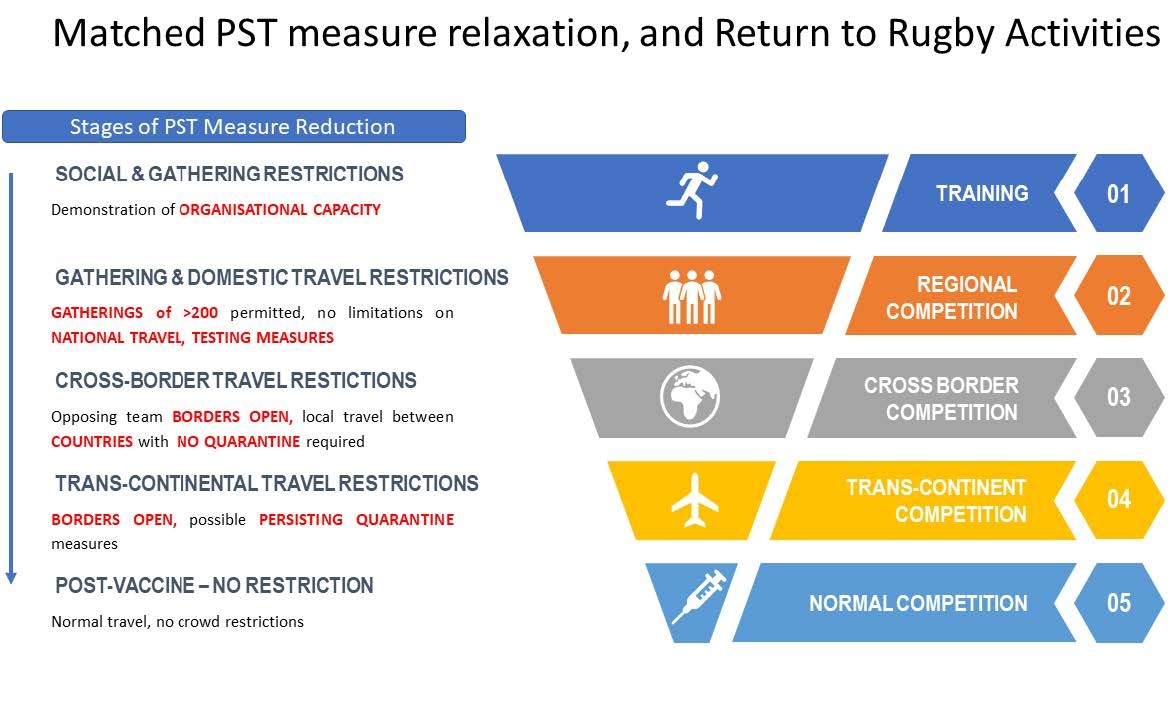Return to Training
When players have been training individually, a reduction in PST measures will signal an opportunity to commence a return to activity plan. Figures 1 and 2 provide an example regarding how reductions in different PST measures may impact first Return to Rugby Training (Figure 1) and Return to Play (Figure 2). As previously identified each government will release PST measures at differing times and your Union and Club will match reduction in PST release and a return to activity. Each government and local public health authority will closely monitor the impact of releasing PST measures on new cases as this will inform if/when any future PST will be reinstituted.
As an example, in Figure 1, it is suggested that once schools and non-essential businesses are re-opened and Group Gatherings < 10 allowed Small Group Training would commence. Also, when Group Gatherings < 50 are allowed this would signal the commencement of Full Squad Non-Contact Training.
Full squad contact training requires reduction in personal social distancing measures or a specific Government exemption. Once contact is permitted in training, certain types of contact will be of higher risk (as outlined in page 2, scrum, maul etc) This has implications for isolation or quarantine should a squad member become infected with COVID-19.
Unions, Competitions and Clubs will need to demonstrate an ability to comprehensively screen (temperature and symptom check), test (PCR and antibody test) and contact trace, in line with local government guidelines, during this process.

Figure 1: Return to rugby training using PST measures as a framework
Figure 2 provides a guide from training through to resumption of all Rugby Competitions and Tournaments, including International Games with spectators.

Figure 2: reduction in PST measures matched to phased return to play